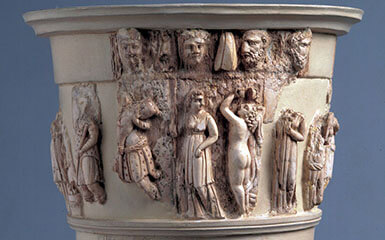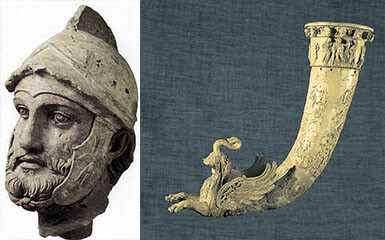Ashgabat
Alem Ferris wheel
State Museum
Fine Arts museum
Wedding Palace
Nisa fortress
Memorial Complex
Ertogrul Gazi Mosque
Neutrality monument
Independence Park
Turkmenbashi Ruhy Mosque
Olympic Village
Ylham Alley
Carpet Museum
Monument of Lenin
Ahal Region
Abivert
Altyn Depe
Annau
Darvaza
Geokdepe
Kowata
Mane baba
Zengi baba
Nedir Shah
Nokhur
Parzdepe
Sarahs baba
Seyit Jemaleddin mosque
Shahrislam
Ulug depe
Mary region
40 cupolas
Akcha Kala
Ancient Merv
Badkhyz
Chilburj
Gebeklytepe
Geok Gumbaz
Gurtly Depe
Kharoba Koshuk
Talkhatan Baba
Yekedeshik
Dashoguz region
Ashyk Aydyn Pir
Devkeshen
Ismamit ata
Kalaly-gyr
Kaplankyr Nature Reserve
Kunya-Urgench
Damla
Balkan region
Dehistan
Yangikala
Awaza
Gozli ata
Kemal ata
Mashat ata
Paraw bibi
Lunar Mountains
Shevlan Baba
Igdy kala
Nisa, the capital of the powerful Parthian Empire, which flourished from the 1st century BCE to the 1st century CE, is a monument of world importance, located in the west of the Turkmen capital. In 2007, the UNESCO Committee inscribed the Parthian Fortresses of Nisa on the World Heritage List as monuments of ‘outstanding universal significance and value’. To date, the State Historical and Cultural Park ‘Nisa’ is situated here. Created in 1980, it became the first Historical and Cultural Park in Turkmenistan.
The word ‘Nisa’ is found in the oldest cuneiform texts and in the Zoroastrian Avesta. The sacred Zoroastrian book describes Nisay, through which the Aryan tribes moved to the southwest, its green pastures, where the Ahalteke horses were bred to glorify this land throughout the ancient East.
Nisa was founded about 22 centuries ago as the royal residence of the dynasty of the descendants of Arshak the Great – the founders of the powerful Parthian Empire and consisted of two impressive fortresses, in Turkmen ‘Kone Nusay’ (Old Nisa) and ‘Taze Nusay’ (New Nisa), at a 1.5-kilometres distance from each other. The area between the fortresses was once occupied by a medieval city.
Inside the fortress, people can see the ruins of the ancient buildings. First, this is the Central complex with a tower-like structure. It was the dominant structure of the entire architectural ensemble, reaching a height of 15 metres. Its facades were decorated with both purely architectural forms and the polychrome wall paintings depicting the battle scenes on the surviving fragments.
Many elements of architectural decorations, including in the remains of chapiters, decorative slabs, parapets and other terracotta products, widely used in the decoration of facades and interiors, were found during the excavations. There were also broken clay statues depicting people in full growth, much larger than human nature, in the Parthian clothes or military armour.
The northern architectural complex of Old Nisa includes a ‘Big square building’ with a number of rooms of different functions around it. The design of this building reflects the local architectural and planning traditions that arose many centuries earlier.
The wonderful ivory rhyta, representing the world-famous masterpieces of Parthian art, were found during archaeological excavations in Nisa. In just 50 years after the discovery of rhyta, they have become real symbols of the ancient culture of Turkmenistan and integral attributes of the national identity.
Several years ago, experienced Russian restorers conducted the conservation of the surviving fragments of coloured frescoes that once decorated the walls of the buildings in Old Nisa. To date, the frescoes from Nisa, like the wall paintings in Pompeii, have become the world’s cultural heritage.
The invaluable collection of rhyta, marble statues, silver and stone items from the royal treasury in Nisa adorns the halls of the State Museum of Turkmenistan. People can watch the rarest samples of the Parthian wall paintings and stone architectural decorations from the Nisian sanctuaries in the Museum of Fine Arts. The expressiveness of the Parthian art and architecture is so strong and captivating that many ornamental patterns, construction techniques and elements of buildings have survived the centuries and become the Turkmen traditions.
After a thorough analysis of the archaeological materials and comparison of the buildings in Nisa with other architectural monuments of the Parthian times in Central Asia, Iran, Afghanistan and Syria, most researchers believe that three main buildings of the central complex in Nisa are associated with Zoroastrian cults and heroic aspects. It means that the inhabitants of Nisa had a tradition to deify their kings and the heroes who won glory in battles. The dynastic cults of the Hellenistic East and, in particular, the idea of the consecrated power and the God’s chosenness of the ruler was formed owing to the development of the local, proto-Turkmen ideological systems based on the holy religious texts – Avesta. A number of historical facts indicate the possibility of the development of a dynastic cult in Nisa and, as a result, the buildings specially designed for it.


